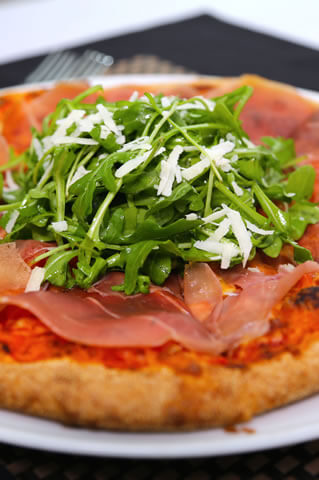The Nation’s Best Pizza Chefs Share Their Top 3 Secrets
The country’s top chefs and restaurant professionals share their secrets to making the perfect pizza, and you may be surprised by their comments.
When it comes to pizza, everyone has an opinion about the flavors and elements that converge into cheesy perfection. We asked some of the country’s top pizza chefs to divulge the secrets to their success, and were surprised how many they had in common.
Secret #1: “Crust makes or breaks a pizza, and there is no substitute for a traditional Italian dough.”
– Pizzeria Owner, Chicago
While traditional Italian pizza features delicate flavors atop a thin crust, American-style pies often feature high-rising deep-dish variations that appeal to heartier appetites on cold, windy nights. Chicago is famous for its deep dish pizzas, but you may be surprised to find out that some of the city’s finest pizzerias also serve pies with traditional thin crusts.
What do all of them have in common?
“The ingredients used are what qualify a pizza dough as ‘traditional.’ And, of course, it has to be tossed by hand.”
Naples is the birthplace of pizza, so a good place to start is with Antico Molino Caputo flour, which is made in Italy’s city of passion. Pizza crust made with this traditional flour is virtually guaranteed to be crunchy on the outside and soft on the inside, but it’s important to follow some other basic guidelines.
“Filtered water is important for crust.”
This is a matter of great debate, but the best chef’s agree that filtered water makes a better crust than unfiltered, and that’s good enough for us. One area where all of the finest pizza chefs agree is on the topic of hand-tossing the dough.
“If the dough isn’t hand-tossed, get out fast.”
Secret #2: “Remember one thing when making a pizza: Less is more. So, keep it simple.”
– Pizza Chef, New York City
From the crust to the toppings, and everything in between, moderation during pizza preparation may be the secret to fully enjoying every indulging bite. If you’ve ever been served a pizza smothered in sauce and toppings, with crust that is nothing more than a soggy mess, then you already understand the value of restraint. However, this same principle applies to every aspect of the most sought after pies, from Boston to New York City.
“You need salt in your pizza dough, otherwise it will be flavorless.”
This simply piece of advice presents a conundrum. If you’re adding salt to your pizza dough, what will happen to the overall product when salty toppings like pepperoni, anchovies, and parmesan are added to the mix? The top chefs all agree that the best pizzas are all about the crust, so salt in the dough should never be sacrificed at the altar of salty toppings.
“Building a pizza is like building anything else – you have to make compromises and consider the whole when choosing the parts. Find flavors that complement each other and exercise some restraint.”
Pizza sauce is another hotly debated topic, but all of our top chefs agree on two points: Use fresh ingredients, and go light during application.
“Nothing is worse than soggy crust. It ruins everything that makes great pizza. “When you think you know the perfect amount of sauce to add to your pizza, cut it in half.”
Our chefs said that sauces should feature garden tomatoes, and fresh-grown basil, oregano, and garlic.
“Sauces should bring out the other flavors, not overpower them. Keep the ingredients to a minimum and everyone will ask you for the secret to your sauce.”
Secret #3: “How you cook your pizza is just as important as what goes into it.”
– Head Chef, Los Angeles
While there was some passionate discussion about the science behind cooking the perfect pizza, every chef agreed that pies cooked in a brick oven were the undisputed champion. Not only does a brick oven add a smoky flavor to the pizza that can’t be mimicked by other cooking methods, it also produces a fluffy crust and delicious crisp toppings.
“A brick oven cooks the pizza so fast that the crust doesn’t have time to get soggy.”
Brick ovens are capable of cooking pizzas in under 3 minutes because of their high temperature, usually between 560 and 660 degrees Fahrenheit. Because heat is spread out within the oven, the pie also cooks evenly. Moisture is instantly sealed within the dough, which is why pizzas cooked in brick ovens have crusts that are soft, yet still chewy.
“Toppings on a pizza should be somewhat crispy, and meats should be seared. Only a pizza oven can accomplish this without overcooking the cheese or crust.”
Brick ovens are most often wood fired, which imparts a unique, smoky flavor that can’t be copied in a home kitchen or conventional oven. High temperatures also generate other flavors unique to the brick oven, but one chef did offer a word of warning.
“High heat kills the flavor of olive oil, so you should always drizzle some over your final product before serving it to the guests.”


